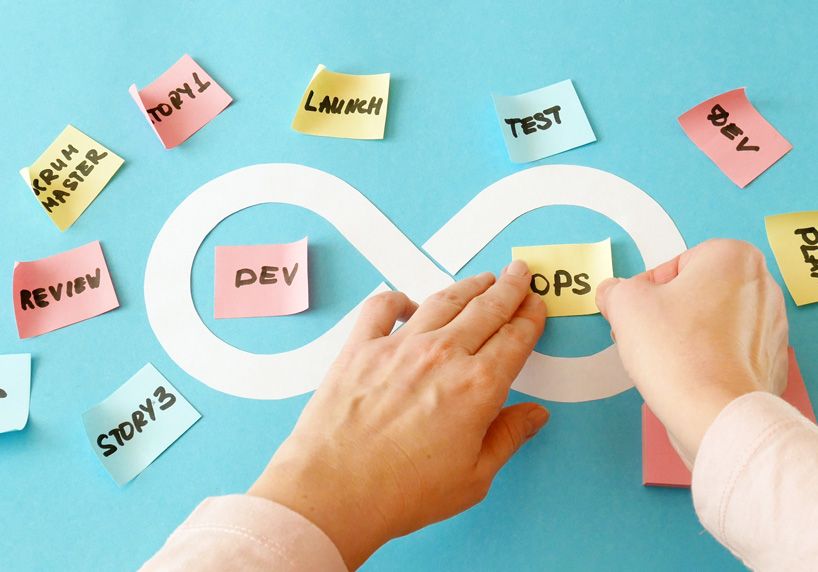Working agile in IT: That’s why agility is so important

Agile development, agile Management, agile work: Agility is the key, especially if you work in software development. And that’s just as well. What’s behind the trending topic.
What does agile mean?
The term comes from Latin. The noun “agilitas” translates as “flexibility” and “speed”.
In the direct sense of the word, this means: A company that works in an agile manner is fast and agile. Not a big tanker, but a speedboat. A nimble startup and not a sluggish large corporation.
But that is only one side of the coin. When companies react quickly, it can end in rushes, planlessness, and chaos. This has nothing to do with real agility!
What makes agility special
There is more to real agility than just being adaptable to new challenges. On the one hand, there is the time factor: companies have to deliver results quickly when market situations change. Just as important is the implementation of customer requests, which nowadays are changing constantly. The focus should always be on the customer, otherwise, a strategy change or a product change makes no sense.
The short cycle and continuity are also part of an agile way of working. The development of software or a digital product is no longer a project that has a fixed start and a fixed end. Instead, it’s about staying on the ball. The changes are not made with one big bang, but incrementally – that is, step by step and building on each other. For this to work, a company needs a new mindset, new team structures, new positions, and new qualifications.
Besides, the goal behind an agile process should be to keep getting better. What is “better” is dictated by the market and ultimately by the customer. To be able to better understand his wishes, you have to constantly stay on the ball, learn, experiment, measure, analyze, and draw conclusions. This is the only way to improve quality in a targeted manner.
Many ways of thinking lead to agility
People like to pretend agility is something completely new. Something that has only been discovered and developed for a couple of years to make businesses better. That’s not true.
For example, if you deal with agile software development, you will quickly notice that it is based on known theories, models, and frameworks. And that many models influence and condition each other. The boundaries in between are fluid.
For example, the Japanese Kaizen philosophy is about constantly changing to get better. In English, this is known as Continuous Improvement or CANI (Constant And Never Ending Improvement). The Kaizen resulted in the TPS (Toyota Production System), Lean Management, and the Lean Startup Method.
The agile development is also based on the AGIL scheme, on Kanban, the Design Thinking, and Extreme Programming (XP). Not to forget: the development of MVP s, the smallest possible products, using BML (Build, Measure, Learn) or PDCA (Plan, Do, Check, Act) cycles.
Agile Development = Scrum?
When people talk about agile development, they drop quickly the term Scrum. Scrum equals agility, agility equals Scrum – is that correct? Yes and no.
There are dozen of methods for agile software development, one of which is Scrum. The “crowd” (the English meaning) has become one of the most popular and most agile development methods. That is why companies advertise vacancies as Scrum Master and/or Product Owner.
Scrum and many other agile methods have in common that they proceed according to iterative development. This means that you and your team develop a product – for example, an app or a web application – in short, successive steps. In Scrum, these are called sprints and usually last two to four weeks. When a sprint is over, publish a functional product. Then the sprint process from PDCA or CML starts from the beginning and repeats continuously.
This means: For example, you do not program software “in one go” that is considered finished on day X, but incrementally. From sprint to sprint, from month to month the software gets new functions, becomes faster, better, more efficient – and always according to the wishes of the customers.
Agility is the answer to competitive pressure
The world is changing itself – every day, unstoppable. This is nothing new. But the changes are happening faster than ever before in human history. Globalization, automation, and digitalization ensure that product life cycles are getting shorter and shorter and competition is increasing.
Companies that have been solidly positioned for many years or decades lose the ground under their feet overnight. So-called disruptions occur more frequently. In these, established structures and processes break open, change radically, or collapse.
Think, for example, of the stumbling of the music industry by providers such as iTunes and Spotify; the mass death of video libraries from streaming providers such as Amazon Prime Video and Netflix; the fight for the survival of retail versus e-commerce. The struggles between analog and digital, old economy versus new economy, are taking on ever greater proportions. Individual companies are no longer under pressure, but entire sectors and industries.
For your company to face these challenges, it must be able to react quickly. Permanent. And always think of the customer. Quelle, Kodak, Nokia, AOL, or Blackberry are examples of how former giants can disappear into insignificance or even bankrupt within a few years. They did not adapt quickly enough to the market changes, they lost their innovative strength.
How agility comes into your company
The basis for it an agile structure is a mindset. All employees must be clear about what agility is all about and why it is important. And how to work agile. This includes shedding the old, rigid ways of thinking. For example, by adhering to the requirements of the Agile Manifesto, in which, among other things, reacting to changes is more important than following a plan.
Equally important is a high level of personal responsibility on the part of everyone involved. Classic structures with a rigid top-down hierarchy must be replaced. Nevertheless, not everything should be too free and loose, otherwise, as described, it ends in a lack of planning and chaos.
New positions are also required. Many companies use Scrum, which is why they then create roles such as Scrum Master or Agile Coach and Product Owner. You can do that – but you don’t have to.
What is important with legalization is that it fits your company and your business customers. Most of the time you cannot make a radical change overnight, otherwise, this will lead to new problems.
A solution could be a hybrid model in which, for example, you can use the classic waterfall model of project management with an agile approach mix. Because let’s be honest: As beautiful as an agile product vision is – it is often difficult to reconcile it with the rigid budget requirements of the finance department.
What does that mean for IT experts?
If you work in IT, you always know: nothing is as constant as constant change. It is not for nothing that they say that a year in information technology is like five years in normal life. That’s true. But the already high frequency increases every year. In some areas, there is no linear, but exponential growth.
Learning for a lifetime – that is one of the basics. Always keeping pace with the times, constantly training, always giving your best, and changing: Kaizen is your building block. Besides, you should have at least T-Shaped skills, an M- or Comb-Shaped profile would be better.

Stay curious. Do experiments. Evaluate the results and conclude new progress. Always think about your customers. It can be helpful to use methods like Jobs To Be Done (JTBD).
And internalize the agile values. This includes, among other things, continuous output and the simplification of processes.
Conclusion
Today’s world is VUCA: volatile, insecure, complex, and ambivalent. One answer to this is agile, the ability to adapt quickly and in a structured manner.
That means: Agility is not a fad, but a key competence for modern times – especially in IT! Agile management and agile development must be properly anchored and applied for them to work.
Finally, a fitting piece of wisdom from George Catlett Marshall Jr., the creator of the Marshall Plan: “Small deeds are carried out better than big ones that are planned.”

